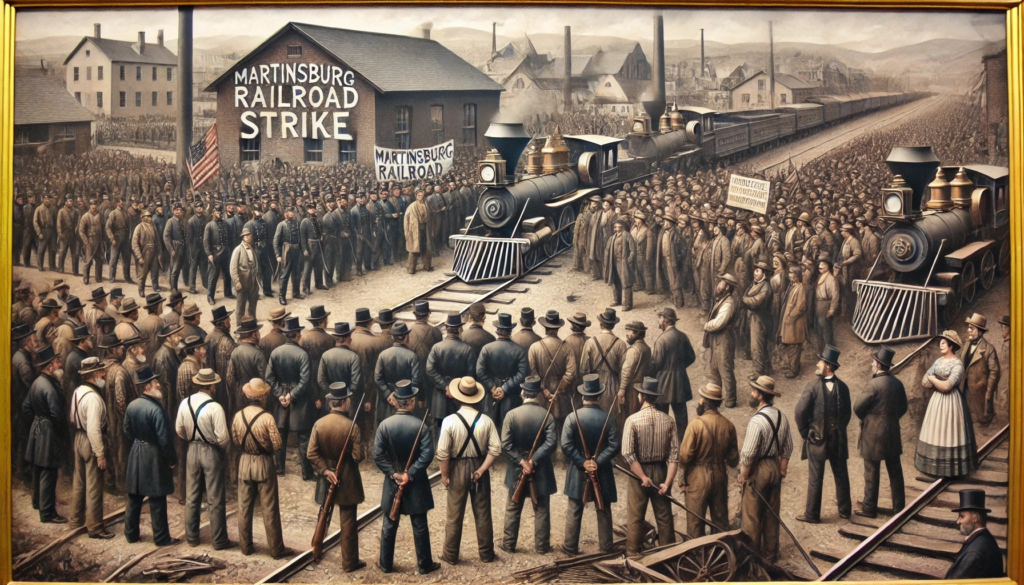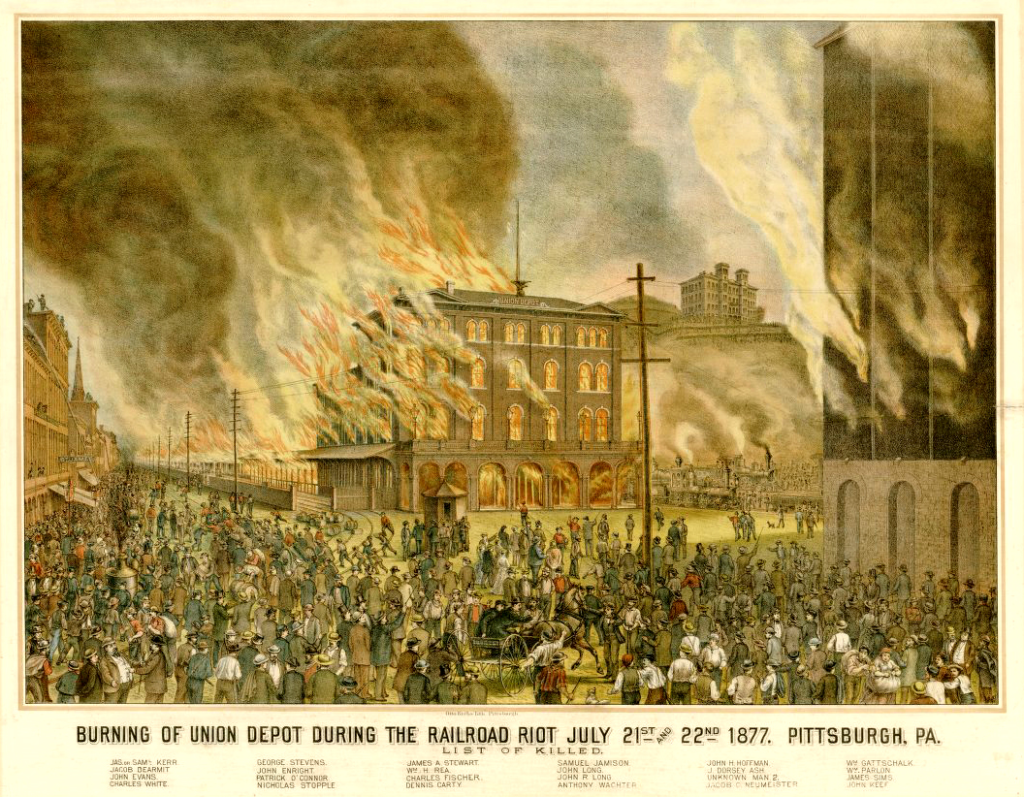The Great Railroad Strike of 1877 was one of the most important labor protests in American history. It started as a response to wage cuts but quickly became a widespread movement of worker unrest. The strike showed the struggles of industrial workers during a difficult economic time and led to a major federal government intervention. This article explains the causes of the strike, how the government responded, and the long-term effects on labor rights in the United States.
What Was the Great Railroad Strike of 1877?
The Great Railroad Strike of 1877 began in July of that year when workers on the Baltimore & Ohio Railroad (B&O) protested after the company announced a second wage cut in less than a year. The strike spread quickly to other railroads and cities across the country, including Pittsburgh, Chicago, and St. Louis.
It was the first major nationwide labor strike in the United States, involving tens of thousands of workers from railroads and other industries. The strike was about more than just wages—it also reflected workers’ frustrations with poor working conditions and growing inequality during America’s rapid industrial growth.

Causes of the Great Railroad Strike of 1877
Several important factors led to the strike:
Economic Hardship and Wage Cuts
The country was still recovering from the Panic of 1873, a deep economic depression that caused high unemployment and falling wages. Railroad companies, which were struggling financially, decided to cut workers’ wages to save money. The B&O Railroad announced a 10 percent pay cut for its workers in 1877. This was the last straw for many workers who were already struggling to survive.
Poor Working Conditions
Railroad workers often worked long hours in dangerous and difficult conditions. There was little job security and few rights for workers. The widening gap between rich railroad owners and poor workers increased anger and frustration.
Lack of Legal Protection
At the time, the government and courts usually sided with business owners during labor disputes. Workers had limited rights to organize or protest. This lack of protection made it difficult for workers to demand better wages or conditions.
How the Strike Spread
The strike started on July 14, 1877, in Martinsburg, West Virginia, where B&O workers walked off the job. Other railroad workers in nearby towns and cities soon joined the strike. The movement spread rapidly to major cities like Pittsburgh and Chicago.
In many places, striking workers blocked trains by sitting on tracks or overturning railcars. In Pittsburgh, the strike turned violent when local militias clashed with strikers. Several people were killed, and much property was damaged. The strike highlighted deep social and economic tensions in industrial America.
Federal Government Intervention
The strike disrupted transportation and commerce across large parts of the country, alarming business leaders and government officials. President Rutherford B. Hayes decided to send federal troops to several cities to restore order.
This was one of the first major uses of the military to break a labor strike in the U.S. Soldiers were sent to Baltimore, Pittsburgh, and Chicago, where they confronted and forcibly dispersed the striking workers.
The government’s use of troops was harsh and led to violent clashes. Many strikers were injured or arrested. The federal intervention showed that at the time, the government strongly favored business owners over workers.
Immediate Outcomes of the Strike
By the end of July 1877, the strike was mostly over. Many workers returned to their jobs without gaining any concessions. Wage cuts remained in place, and railroad companies showed their power.
Despite this, the strike had a powerful effect. It exposed the struggles of workers and the serious problems of industrial labor. It also marked the beginning of a new era in which workers began to organize more effectively.
Long-Term Effects on Labor and Workers’ Rights
Though the strike failed in the short term, it helped shape the future of labor in America.
Growth of Labor Unions
The strike encouraged workers to join unions and organize to protect their rights. Groups like the Knights of Labor grew in membership and influence after 1877.
Increased Public Awareness
The violent suppression of the strike made many people aware of the hardships workers faced. It sparked discussions about the need for better working conditions and fair wages.
Government’s Role in Labor Disputes
The strike revealed how closely the government worked with business interests, often against workers. It raised questions about the proper role of federal power in labor conflicts.
Foundation for Labor Laws
The Great Railroad Strike helped lay the groundwork for future labor reforms. Over time, laws were passed to protect workers’ rights to unionize, improve safety, and establish fair labor standards.

Why the Great Railroad Strike of 1877 Still Matters
The Great Railroad Strike was a key moment in U.S. labor history. It was the first large-scale protest that showed the growing tensions between workers and industrial capitalists during America’s rapid industrialization.
The strike is remembered today as a symbol of the fight for workers’ rights and fair treatment. It reminds us that the progress we see in labor laws and protections was often won through difficult struggles and sacrifices.
Conclusion
The Great Railroad Strike of 1877 was a turning point that revealed the challenges facing American workers in the industrial age. Though the strike was broken by federal troops and failed to achieve immediate goals, it set the stage for future labor movements.
By understanding this event, we gain insight into the early struggles for fair wages, safer working conditions, and the right to organize. The strike remains a powerful example of worker courage and the ongoing fight for economic justice in America.
Do Follow USA Glory On Instagram
Read Next – Spanish Flu in the U.S.: Forgotten Stories and Local Impact






